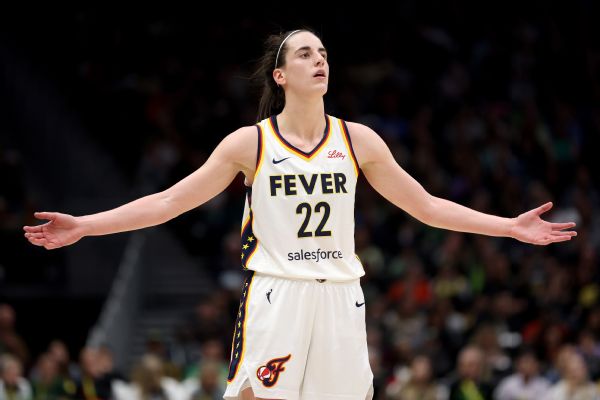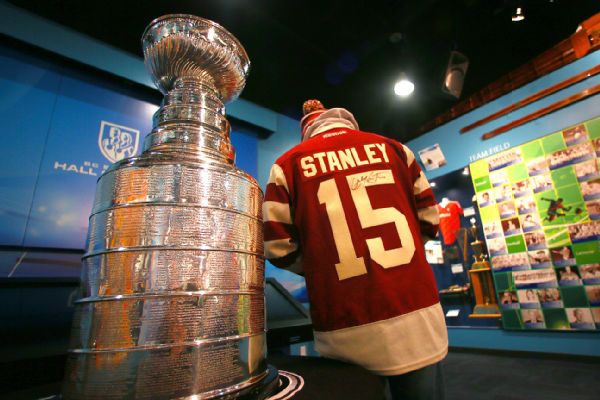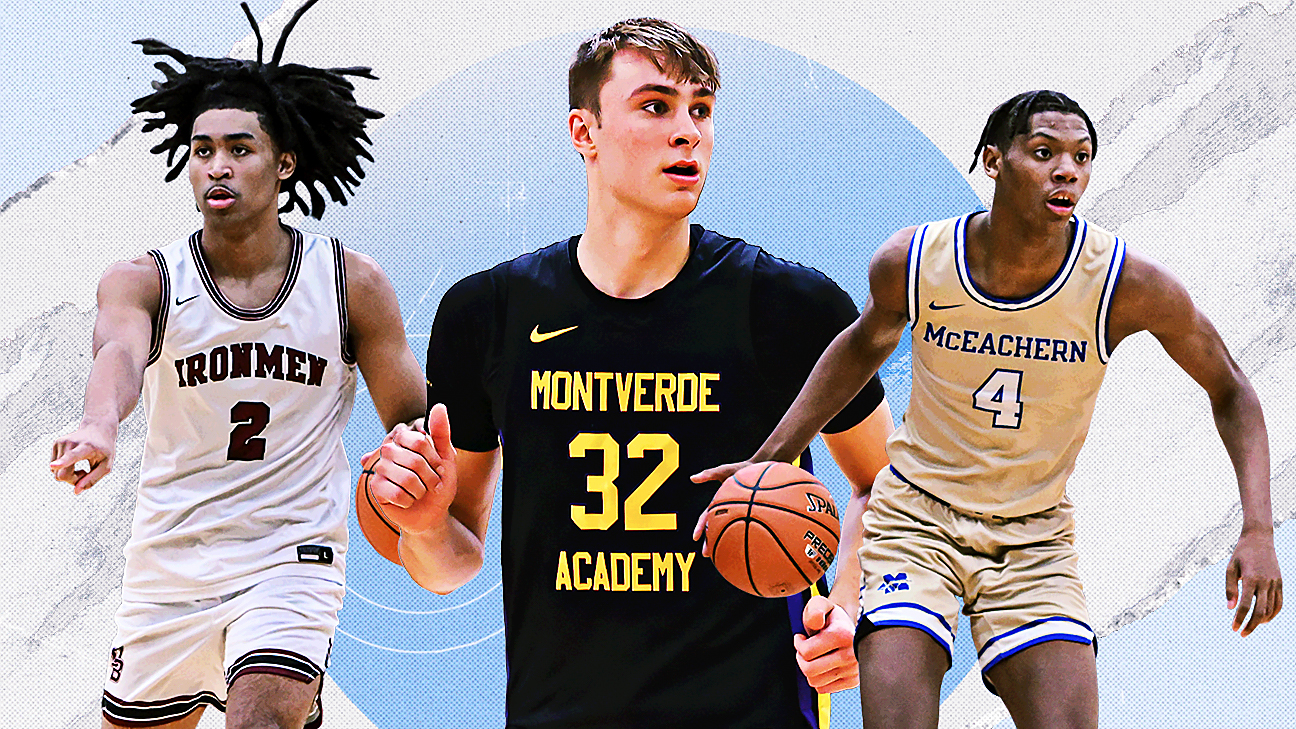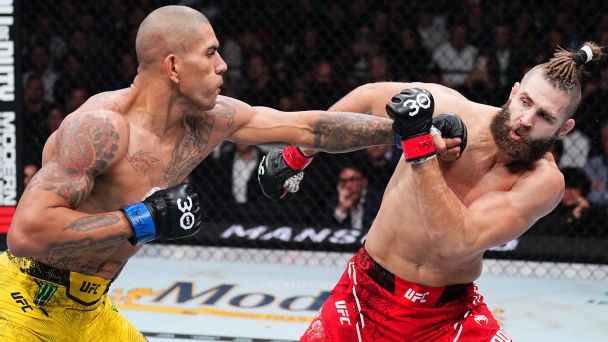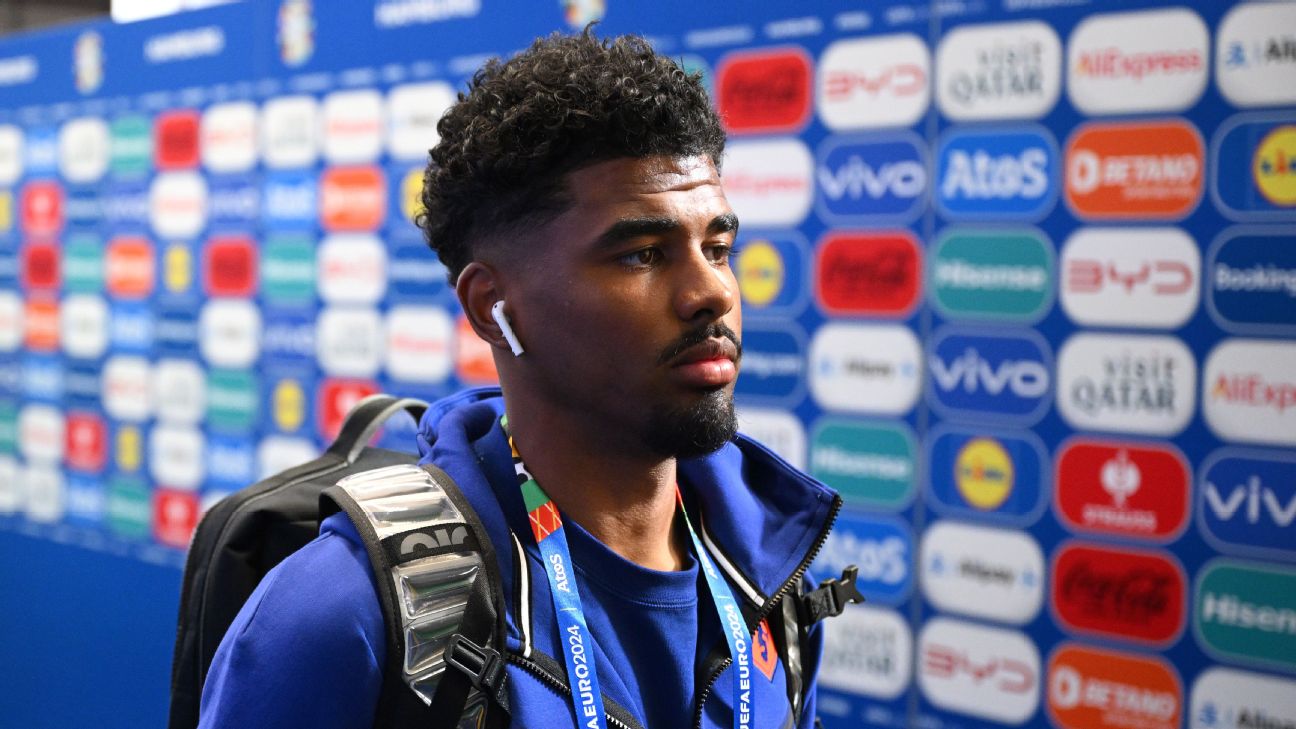![Cole Eiserman [1296x729]](https://a.espncdn.com/photo/2024/0623/r1349612_1296x729_16-9.jpg)
NYCFC build big first-half lead defeat Orlando City
An extraordinarily compressed NHL summer continues this week:
The Stanley Cup is being awarded Monday night. The NHL Awards show is Thursday. The 2024 NHL draft is Friday and Saturday. Free agency begins Monday, July 1.
That comes after two significant trades took place last week: The New Jersey Devils acquired goaltender Jacob Markstrom from the Calgary Flames, and the Los Angeles Kings sent center Pierre-Luc Dubois to the Washington Capitals in exchange for netminder Darcy Kuemper.
To help make sense of it all, our reporters reached out to sources in front offices around the league for their takes on the draft, trades and the free agent class.
So ahead of this week's flurry of action, Ryan S. Clark, Kristen Shilton and Greg Wyshynski deliver the latest buzz around the NHL:
Why has the hype surrounding Macklin Celebrini been quieter compared to Connor Bedard?Boston University center Celebrini has been described as a generational talent who can be a foundational player. So much so that this draft has been colloquially called "the Celebrini draft," with the premise that any actual drama will start with who goes second.
That's exactly what happened last year when Connor Bedard went first to the Chicago Blackhawks. Not that Celebrini and his exploits haven't been chronicled, but it does appear to be noticeably different when compared to Bedard.
"I think we almost undervalue him and the market doesn't see what Celebrini can reach," one amateur scouting director told ESPN. "I think his talent and work ethic are there. He's not the biggest guy out here, but he is a strong, stocky kid with plenty of talent and an excellent shot."
The amateur scouting director said the difference between Bedard and Celebrini is that Bedard is the smoother player, whereas Celebrini's game has more power rather than the finesse that's commonly associated with being the No. 1 pick. Still, the expectation is Celebrini will get drafted by the San Jose Sharks. If so, the Sharks would have another franchise player to go along with Boston College center Will Smith, who signed his entry-level contract after just one season in college.
"I don't want to say they lucked out, but this year to select Celebrini? I think every team will say that's a no-brainer," the amateur scouting director said. "Will Smith is another talented forward. They are not big guys, but they are foundational pieces for the organization for sure. If you have them, you have your one-two centers and if you need them to play together, you can do that. But they already have their 1C and 2C built in." -- Clark
The Cole Eiserman conundrumThe number is almost mind-boggling: 97 goals. That's how many Cole Eiserman scored in 2020-21 while playing for Shattuck St. Mary's 14U AAA team, in 50 games.
He has scored everywhere else he has played: 43 goals in 42 games with the U.S. National U17 team, and then 26 goals in 20 games for the U18 team (2022-23) and then 58 goals in 57 games for the U18 team (2023-24); nine goals in seven games for the U.S. in the world junior tournament with the team winning gold. He can shoot the puck and shoot it hard from any portion of the offensive zone.
But scan almost every mock draft and the 17-year-old Eiserman isn't projected as a lottery pick. In some draft evaluations, he's seen as someone who could plummet down the first round.
He has earned the reputation of being a defensive liability, not playing well away from the puck. It has stuck with him, and turned a player who was once considered a top draft prospect into more of a project.
That has some observers baffled.
"It's a classic case of judging a developing player as a finished product," one NHL source said. "You can teach defense. You can't teach what he does offensively."
Is there still a chance Eiserman surprises in the first round? TSN director of scouting Craig Button actually had the winger moving up his draft board to No. 5 in his latest ranking.
"The draft's most intriguing player," Button said of Eiserman. "I think you're going to see a player that just settles in next year and doesn't feel that pressure and is just going to play. You're not getting him for defense, you're getting him for offense. He knows how to open up, where to open up, he knows how to get the puck off his stick and find those openings."
Every draft has its wild card. It could be Eiserman in 2024. -- Wyshynski
What's at the center of this year's NHL draft conversation?Simple: The fact that the draft will be decentralized going forward.
Executives and scouts working the phones for all to see on the arena floor. Prospects and their families sit patiently in the stands waiting to hear their names get called. Fans who either have something to cheer, something to boo or something to be confused about vocally share their feelings.
These are the familiar facets of the NHL draft, details that are expected to change starting next year once the draft enters its first year of decentralization. The amateur scouting director who spoke with ESPN said there is a little bit of "a divided opinion" among those within the industry about decentralizing the draft, with the understanding most feel this is the right path.
"I know this is going to be the last one but it has been great to see everyone together in one place," the amateur scouting director said. "The cities like to put on a show but obviously, at the same time, you have to look at the economics and what it means to do business."
Moving to a decentralized draft means teams will be able to take part in the draft from their facilities -- similar to what is done in other professional drafts such as Major League Baseball, the NBA and the NFL. By remaining at their facilities, it reduces travel costs for teams, allows those teams to access their data and metrics without having to physically move any of their infrastructure to a draft city, all while allowing for more privacy.
But the switch had one NHL general manager wondering how much money will teams actually save. The GM said teams still have to pay for airfare, hotels and meals because the majority of scouts don't live in the same city for the team that employs them.
"Unless you are keeping your scouts in their hometown and doing everything via Zoom, you won't be saving actual money," the GM said. "I know our team is still going to bring in scouts and still do our meetings. Maybe locally, you might be able to offset some of that with a sponsor or something like that."
Then, that's when the GM started getting creative. They wondered if teams would make more of a production of their draft day setups. The GM cited how it's something commonly seen with the NFL draft, and there were a few teams that did it during the 2020 NHL draft that was impacted by the pandemic.
"I think everyone will do it differently, but will teams be looking to put a unique spin on it?" the GM asked. "Would Florida do it on a yacht? Will [Dallas Stars GM] Jimmy Nill be on a dude ranch in Texas? I would imagine each organization is going to have some unique opportunities for their own market. But that's just me, and it's not like I spend a lot of time thinking about that." -- Clark
Will this be the summer of trades as teams seek to work around the cap?As one executive explained, every front office is always thinking about the salary cap no matter the time of year. But as that same executive also said, it's about how teams choose to examine the cap that makes the difference.
Even with the salary cap increasing an extra $4.5 million to go from $83.5 million to $88 million, there's still a need for teams to get creative. That's why the NHL could be in store for more trades similar to the ones made June 19 when the Calgary Flames traded goaltender Jacob Markstrom to the New Jersey Devils while the Los Angeles Kings swapped center Pierre-Luc Dubois in exchange for goaltender Darcy Kuemper.
Both trades were about teams addressing their needs, with the added context that they also created more cap flexibility in some cases. Getting Dubois' $8.5 million annual salary off their books allows the Kings more space to potentially re-sign players such as defenseman Matt Roy, while addressing a restricted free agent class that includes Quinton Byfield, Carl Grundstrom and Arthur Kaliyev.
If there are more like-minded teams applying that strategy, does that mean it's going to be easier for teams to facilitate those deals? Or because there are so many teams trying to do the same thing, it's actually going to make pulling off trades or other cost-saving measures more complicated?
"I've heard before that teams are going to smarten up on July 1 and not sign players to long-term deals or no-movement clauses," one NHL executive said. "They're going to continue to do those things because the market is what the market is, and if you want players, you're going to have to go get them." -- Clark
All is quiet on the Marner front; Laine buzz picks upThe rumor mill surrounding Mitch Marner hasn't quieted since the Toronto Maple Leafs' postseason exit in May. Naturally, the backdrop of a draft has ratcheted noise up again about the potential trade scenarios for Marner to emerge. We know Marner holds the cards here with the no-trade clause attached to this upcoming final season on his contract, but there are still a handful of teams -- mostly in the Western Conference -- with definite interest in trying to lure him away.
GM Brad Treliving can have face-to-face conversations about what that might look like for the Leafs, but all current signs point to Treliving being in no real rush to finalize anything with Marner. As much as the drama around a draft trade is intriguing, expect it to be more a forum for conversation than anything else.
One potential trade situation to keep an eye on though involves Patrik Laine. At least two agents think it's probable Columbus will be aggressive at the draft in trying to give Laine a fresh start elsewhere -- and the sooner the better. GM Don Waddell has said he doesn't necessarily want picks or prospects in return for Laine, but they could be part of a desirable package that includes an NHL skater as well.
The draft might just provide Waddell, too, with a feel for the market surrounding Laine and what that could look like in negotiations. -- Shilton
The most interesting team in free agency? Try the Vancouver CanucksOne general manager told ESPN that the Canucks are their most fascinating team to watch this offseason for a number of reasons. The GM said they're curious to see how the Canucks are going to manage the questions facing them regarding Dakota Joshua, Elias Lindholm and Nikita Zadorov.
Namely, what sort of money will Joshua, who was making $825,000 annually, earn after having the strongest season of his career? How much did Zadorov's performances since he was traded to Vancouver impact what he could get going forward? And with Lindholm turning 30 later this year, what will his next contract look like?
And then there's this question.
"Are they content with that, or do they look at being aggressive with Jake Guentzel because [Canucks president Jim Rutherford and GM Patrik Allvin] had him in Pittsburgh?" the GM asked. "It all leads into how they're going to use their allotted money."
Whatever decisions they make in free agency come with the notion that the Canucks are working toward replicating their success from this season, and that what they did can be sustainable over the long term.
So what's the biggest key for teams trying to turn one good season into several playoff campaigns with the hope of consistently challenging for a Stanley Cup?
"I think it's weighing external versus giving up draft picks in a trade," the GM said. "Do you trade for someone established versus having someone younger and more controllable [from a contract perspective] who is already there, and then weighing that with what's out there in the free agent market. It's the cost of real assets versus freebies. There is also an age discrepancy with that as well. That's an interesting balance when you are looking three years out." -- Clark
Could the Utah Hockey Club use free agency to climb to massive heights in its first season?The Arizona Coyotes used to operate with a philosophy that saw them spend just enough to reach the salary cap floor, leaving plenty of space to add as needed during the season (and as a third-party trade broker).
But what about the Utah Hockey Club? Could this be the offseason that sees them take a more aggressive spending approach? Cap Friendly's projections show that the Utah Hockey Club will have $43.564 million in cap space, which is the most of any NHL team.
If so, it could end up being an amplified continuation of what the franchise did during what was its final offseason in Arizona. It added Nick Bjugstad, Matt Dumba, Sean Durzi, Alex Kerfoot and Jason Zucker either by free agency or trades. Those players strengthened the team's young core of Clayton Keller, J.J. Moser, Nick Schmaltz and Logan Cooley, among others, and made them a team to watch in the early stages of the season.
They were 23-19-3 on Jan. 22 and were two points behind the Nashville Predators for the final Western Conference wild-card spot. Then a 14-game losing streak torpedoed their chances, as they went from potential playoff hopeful to adding draft capital ahead of the trade deadline.
"I think they are getting close," an executive said of Utah. "I like their younger players, I like their coaching staff. I think they did a really good job in Arizona with some variables that were out of their control, and I don't think those variables are going to be a problem in Utah. They have a committed owner who is willing to spend. It'll be a matter of if a player wants to go into the Salt Lake City market." -- Clark







